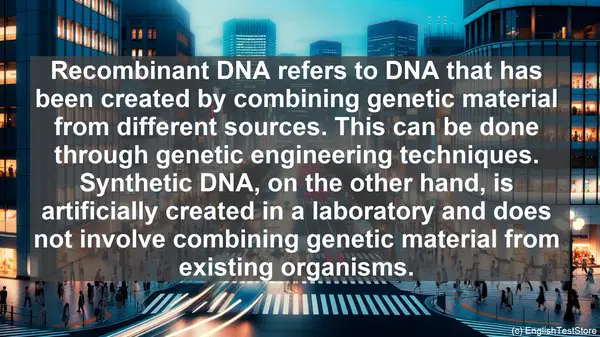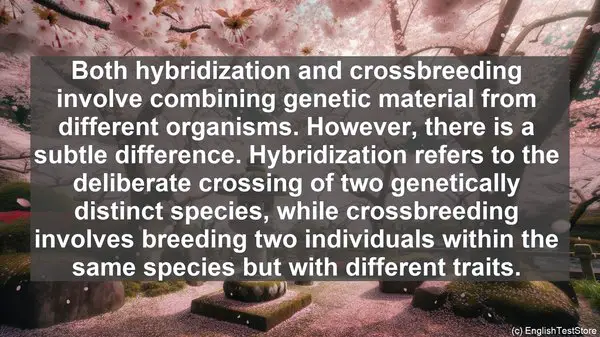Introduction
Welcome to today’s lesson on food biotechnology. In this lesson, we’ll be discussing the top 10 commonly confused words in this field. Understanding these terms is crucial for anyone studying or working in food biotechnology.
1. Genetic Modification vs. Genetic Engineering
These terms are often used interchangeably, but they have distinct meanings. Genetic modification refers to any alteration in an organism’s genetic material, while genetic engineering specifically involves the deliberate manipulation of genes for a desired outcome. For example, when scientists add a specific gene to a plant to enhance its resistance to pests, that’s genetic engineering.
2. Transgenic vs. Genetically Modified Organisms
Transgenic organisms are a subset of genetically modified organisms (GMOs). While all transgenic organisms are GMOs, not all GMOs are transgenic. Transgenic organisms have genes from a different species inserted into their DNA, while GMOs can also involve modifications within the same species.

3. Selective Breeding vs. Genetic Modification
Selective breeding, also known as traditional breeding, involves choosing organisms with desired traits and breeding them to pass on those traits. Genetic modification, on the other hand, involves directly manipulating an organism’s genes. While selective breeding has been practiced for centuries, genetic modification is a more recent development.
4. Cloning vs. Genetic Engineering
Cloning is the process of creating an organism that is genetically identical to another. It involves taking a cell from the original organism and using it to develop a new one. Genetic engineering, as we discussed earlier, involves manipulating an organism’s genes. While cloning is a form of genetic manipulation, it is not the same as genetic engineering.
5. Hybridization vs. Crossbreeding
Both hybridization and crossbreeding involve combining genetic material from different organisms. However, there is a subtle difference. Hybridization refers to the deliberate crossing of two genetically distinct species, while crossbreeding involves breeding two individuals within the same species but with different traits.
6. Biotechnology vs. Genetic Engineering
Biotechnology is a broad term that encompasses various techniques used to manipulate living organisms or their components for practical purposes. Genetic engineering is a specific type of biotechnology that focuses on altering an organism’s genes. In other words, genetic engineering is a subset of biotechnology.
7. Recombinant DNA vs. Synthetic DNA
Recombinant DNA refers to DNA that has been created by combining genetic material from different sources. This can be done through genetic engineering techniques. Synthetic DNA, on the other hand, is artificially created in a laboratory and does not involve combining genetic material from existing organisms.

8. Biofortification vs. Genetic Modification
Biofortification is the process of increasing the nutritional value of crops through traditional breeding methods. It involves selecting and breeding plants with higher nutrient content. Genetic modification, as we discussed earlier, involves directly manipulating an organism’s genes. While both techniques aim to enhance crop nutrition, they differ in the approach.
9. In Vitro vs. In Vivo
In vitro refers to experiments or processes that are conducted outside a living organism, usually in a laboratory setting. In vivo, on the other hand, refers to experiments or processes that are conducted within a living organism. These terms are often used when discussing studies or tests conducted in the field of food biotechnology.
10. Marker-Assisted Selection vs. Genetic Modification
Marker-assisted selection (MAS) is a breeding technique that involves using molecular markers to select for specific traits. It is a form of traditional breeding and does not involve directly manipulating an organism’s genes. In contrast, genetic modification involves altering an organism’s genes for a desired outcome.
